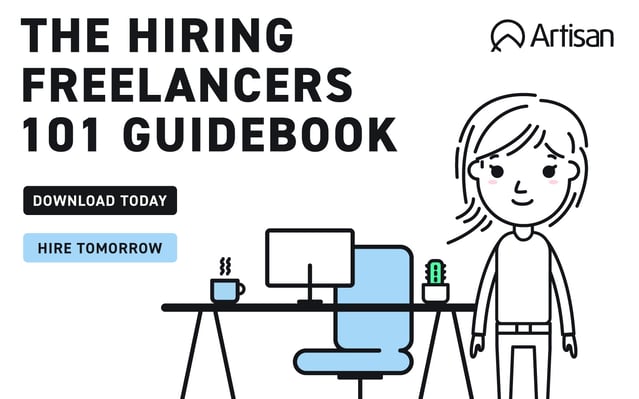Blame the internet.
Freelancing continues to be the biggest disrupter of the traditional work environment since Eli Whitney’s cotton gin. It’s unclear whether the chicken or the egg came first, though. Did employers get a twinkle in their eyes about the money they’d save on benefits if they hired by project?
Or did employees see the chance for some freedom from the 9 to 5 and take it?
Either way, the U.S. employment model has changed forever.
When a company needs to hire help, they have a bigger decision beyond who would be best for the role. Now you must first decide whether you’re hiring for a project or for the long term. There are pros and cons to both.
Hiring By Project – What’s Not to Love?
Staffing up to accommodate a short-term need is of great benefit to an employer who experiences seasonal downturns. If your company has a big creative project coming up that will require additional staffing for a short time, hiring freelance workers probably makes sense.
Hiring by project lets you:
- Save money and maximize productivity around a specific short-term event.
- Bring in fresh ideas and perspectives to help a stale team sparkle like the glitter on Michael Jackson’s glove.
- Help boost productivity for full-time team members who may be a little stuck in the mud.
- Allow you to “try it before you buy it” by testing out the “temp-to-hire” concept.
- Bring in very targeted expertise to solve specific problems that your full-time employees can’t fix.
Most companies today select a hybrid model of in-house and freelance talent. These models have allowed businesses and their workers a brand new flexibility under the gig economy umbrella. But before jumping in with both feet, what are the cons of outsourcing creative talent by project?
The Downside of Hiring by Project
Every yin has a yang, of course, so there are downsides to hiring project-based creative talent.
Downsides to the temporary project worker could be:
- Finding good short-term talent is difficult. There are freelance workers on the market that lack the talent and finesse to work full time. There are also incredibly talented freelancers out there. The trick is going to be telling the difference before the contract is signed.
- There is always on-the-job training that must occur in these roles. Bringing in outsiders will place more burden on internal teams required to spend time bringing contract workers up to speed.
- Culturally, this could disrupt team camaraderie. While this may be good or bad, it's certainly something to consider.
- Speaking of relationships, breaking up is hard to do. If you bring on a contract worker that stays six months or a year, it might be tough on everyone to say goodbye.
Don't Forget: There's a Hiring Difference
Decided you want to bring in freelancers for project-based work?

You're going to need to hire a little differently than you're used to doing. Check out this guide to hiring freelancers to get up to speed.
Bonus Tip: Know When to Bring in the Pros
Like any employment model, what drives the success of a project is the creative talent behind it. That’s why Artisan Talent is so successful — we’re experts at the difficult task of matching short-and long-term talent to the jobs that need to be done. If you’re considering creative talent for project-based work, we’re just a call (or a click) away.
Ready to hire? Make sure you attract the right person with our recent blog, How to Write Compelling Project-Based Job Posts.




